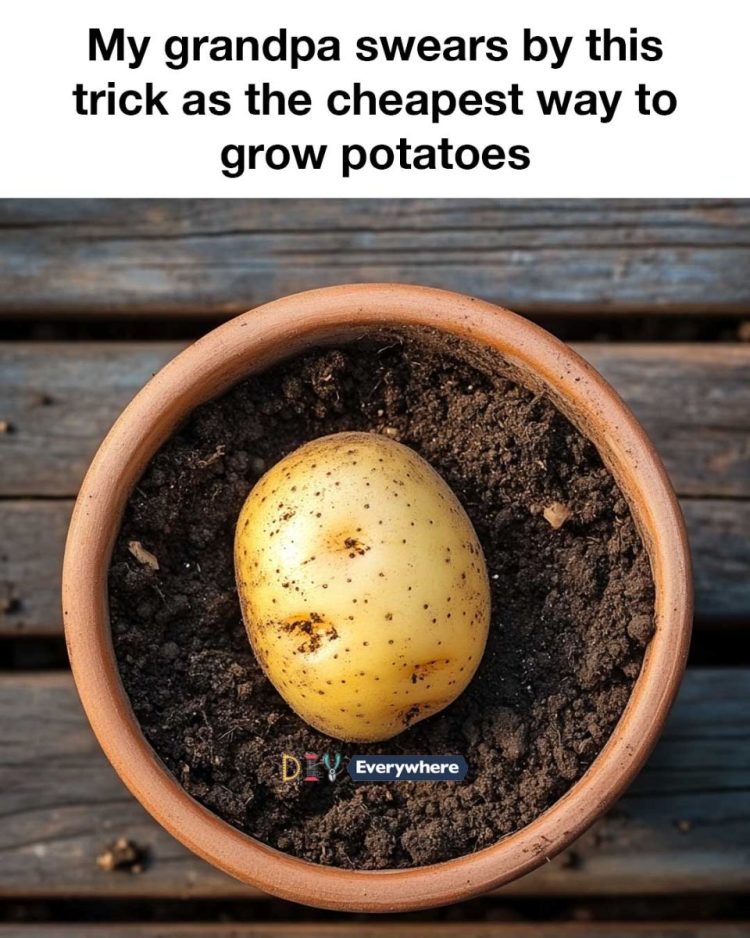Growing potatoes in a bucket is an innovative and space-saving method that has gained popularity among urban gardeners and those with limited space. This technique allows you to cultivate potatoes in a controlled environment, making it easier to manage soil quality, water, and pests. My grandpa, a seasoned gardener, swears by this method as the most cost-effective way to grow potatoes, ensuring a bountiful harvest without the need for a large garden plot.
Understanding the Benefits of Bucket Gardening
Bucket gardening offers several advantages, especially for those with limited space or poor soil conditions. It allows for better control over soil quality and moisture levels, reducing the risk of diseases and pests. Additionally, buckets can be moved to optimize sunlight exposure and protect plants from harsh weather conditions. This method is also economical, as it requires minimal investment in materials and can be done with recycled or inexpensive containers.
Materials Needed for Bucket Potato Growing
To start growing potatoes in a bucket, you’ll need a few basic materials: a large bucket (at least 5 gallons), quality potting soil, seed potatoes, and a trowel. It’s also helpful to have a drill for making drainage holes and a watering can for maintaining moisture levels. Optional materials include organic fertilizer and mulch to enhance soil fertility and retain moisture.
Preparing Your Bucket for Planting
Begin by selecting a bucket with a capacity of at least 5 gallons to provide ample space for root development. Drill several holes in the bottom for drainage to prevent waterlogging, which can lead to root rot. If using a recycled bucket, ensure it is clean and free from any harmful residues. Place a layer of gravel or small stones at the bottom to further improve drainage.
Selecting the Right Potato Varieties
Choose potato varieties that are well-suited for container growing, such as ‘Yukon Gold’, ‘Red Pontiac’, or ‘Fingerling’. These varieties tend to have a compact growth habit and produce well in confined spaces. Consider your climate and growing conditions when selecting seed potatoes, as some varieties may perform better in certain environments.
Step-by-Step Guide to Growing Potatoes in a Bucket
This guide will walk you through the process of growing potatoes in a bucket, from selecting the right materials to harvesting your crop. Follow these steps to ensure a successful and abundant potato harvest.
1. Choosing the Right Bucket
Select a sturdy bucket with a capacity of at least 5 gallons. Ensure it is made of food-safe material if you plan to consume the potatoes. The bucket should be deep enough to accommodate the growth of potato tubers and allow for hilling as the plants grow.
2. Preparing the Soil Mixture
Use a high-quality potting mix that is light and well-draining. You can enhance the soil by mixing in compost or well-rotted manure to provide additional nutrients. Avoid using garden soil, as it may compact in the bucket and hinder root growth.
3. Planting the Seed Potatoes
Cut larger seed potatoes into pieces, ensuring each piece has at least one ‘eye’. Allow the cut pieces to dry for a day to prevent rotting. Fill the bucket with about 4 inches of soil, place the seed potatoes on top, and cover them with another 2-3 inches of soil.
4. Watering and Caring for Your Potato Plants
Keep the soil consistently moist but not waterlogged. Water the plants regularly, especially during dry spells, to ensure even moisture distribution. Be cautious not to overwater, as this can lead to root rot.
5. Managing Sunlight and Temperature

My grandpa swears by this trick as the cheapest way to grow potatoes
ADVERTISEMENT
For Complete Cooking STEPS Please Head On Over To Next Page Or Open button (>) and don’t forget to SHARE with your Facebook friends
ADVERTISEMENT